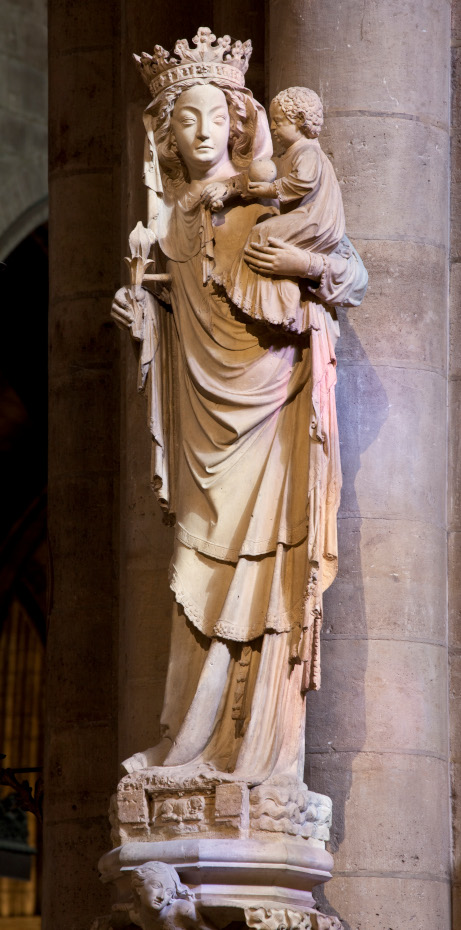+33 (0)1 40 41 96 42
On April 14, 2019, a violent fire destroyed the spire, the entire frame, and seriously damaged the vault of Notre Dame de Paris.
Reconstruction had been slowed down by the implementation of important prior security measures. If the square of Notre Dame will soon be reopened to the public, ten months after the disaster, can we say that the promise of reconstruction in five years will be kept?
Below is a summary of what has been done and remains to be done.

When you enter the cathedral, you can see that the ground has been cleared but that it is still raining inside the building. Three gaping holes can be seen at the top of the vault at the end of the nave facing the heart and 2/3 of the nave. These were caused by the fall of the arrow.
The statue of The Virgin and Child below was miraculously spared.
As it fell, the upper part of the arrow continued to burn and charred the bases of two columns. They were belted to prevent them from bursting, this causing a collapse of the entire arch, which in turn thrust the flying buttresses towards the interior of the building, an accident which would have been fatal.
Another wonderful surprise, and against all odds, the rose of the southern transept offered by Saint Louis in the 13thcentury was untouched by the inferno. No stained glass was broken.
The stained-glass windows of the heart were damaged however. They were placed elsewhere for later restoration.
After the fire, the paving of the interior of the building was covered with three centimeters of coal and water. The vault presented worrying signs of risk of collapse in several areas. No human intervention could be carried out in the nave. Several robots were then used to remove this coal as well as rubble and charred beams.
The day after the fire, numerous sensors were placed to measure possible movements. As of now, we can see that the structure itself remains in place.
The vault is still in danger of collapsing and the main threat comes from the 200 tonnes of scaffolding partially decomposed by the fusion created during the fire. It is impossible to simply dismantle the 40,000 pieces of steel it is made up of. To prevent the scaffolding from bursting at its base, the structure was first reinforced, then 300 tonnes was added to the total weight of the scaffolding. The flying buttresses were therefore reinforced and only then could disassembly begin.
50 million euros have already been engaged.
A lot of waste consisting of stones, charred wood, and scaffolding elements stagnates around the holes at the top of the vault.
Philippe Villeneuve, chief architect of historic monuments, explains that it is still unknown if these elements can be removed without threatening the building further. “We cannot yet say that Notre Dame is saved”.
The scaffolding must first be completely dismantled. This will take place from February to May 2020. Only then can the final and complete diagnosis of the building be carried out. It will be given mid 2020. The consultation for the restoration will then be carried out and the restoration work will start during 2021.
On the day we write this article, the specialists in charge of the renovation project agree that the ambitious restoration period in 5 years is possible.
Paris will always be Paris with Notre Dame.

19, rue des Prêtres-Saint-Germain-l'Auxerrois
75001 Paris
+33 (0)1 40 41 96 42